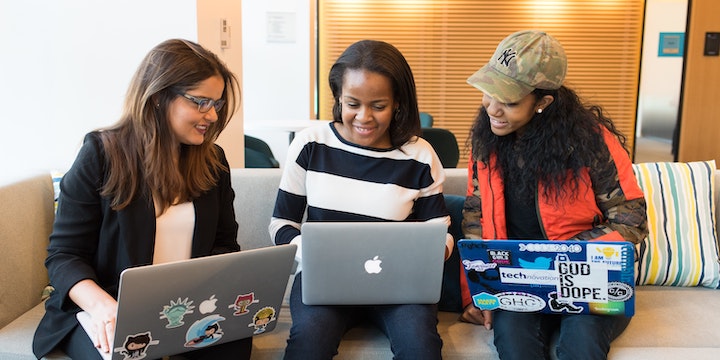
Could you be happier at work?
Take our quiz and find out! It takes just five minutes and you'll get a data-packed report afterwards.
More from the science on Team co-operation
Social network scientists have a lot to say about the shape of our linkages to other teams in an organization - and what this means for the team's creativity and performance.

1. Three forms of social capital and why they matter for your team
Social scientists have spent the last couple of decades looking at social networks and their influence on us. Whether it's getting ahead, support through difficult times, or general happiness and wellbeing, those who have a network of friends and family generally fare better.
Some psychologists distinguish between three sorts of social tie: - "Bonding" social ties connect close peers together. In the work context, these are your team mates. - "Bridging" ties connect people with dissimilar identities and backgrounds. In a work context, these are your colleagues in other teams. - "Linking" social ties connect people at different levels within an organization or society. In a work context, these are your managers, division heads and organizational leaders.
A social network scientist would argue it's not what you know, but who you know that determines our successes. It naturally follows, then, that teams who have a well developed network of bonding, bridging and linking relationships will find it easier to do their work, because they have good relationships with individuals outside the team who they are reliant on to meet deadlines and deliver impact.
A good question to ask at the beginning of any new work project is "who can we not move forward without?". This will tell you something about the relationships you need to build to accomplish your goals.
2. Why diverse collaborations drive innovation
Work on human cognition has shown that our perceptions are most influenced by who we have decided to be, rather than what we see. This leaves us very susceptible to being trapped by "group think" and "echo chambers" where the same ideas keep circulating without being questioned.
Research in workplaces has shown that people who seek out a wide range of people and ideas make better decisions. The inference is your team will perform better by proactively bringing a broader range of perspectives to bear on your work.
Within your organization you will likely have a network of people diverse in educational background and life experience, but similar in their understanding of the collective goal. This makes cross-team linkages a particularly rich resource of creativity and innovation which your team can harness through better connections and improved relationships.
3. Relationship building is legitimate work!
Organizations often find it difficult to justify budget on informal socializing. But intentional networking is a valuable use of work time. A central message from a range of recent research projects is that relationships are as important as the activities on our to-do list. This is because some of the best ideas, re-prioritizations, and problem solving comes from relationships with others.
This is important because we often think about reaching out to someone when we need them to complete a task, but this approach misses the fact that some of the best work happens because of an investment in relationship building. The fact that we have the relationships in place means we have people at the ready to provide guidance and answer our questions in a timely way that can expediate projects and help to course-correct them.
Network studies show we effortlessly fall into patterns of helping those we care about - but it's only through investing in each other that we build a network of willingness that extends beyond our immediate team.
4. The importance of professional empathy
Professional empathy is a great attribute for teams and organizations to aspire to - because interpersonal understanding encourages us to be more compassionate to others. If we feel we understand others, then we are more likely to explain away poor behaviour with situational causes – eg. "I know it's their busy period; they are probably stressed" - rather than trait causes – such as "they have not responded to the email; they don't appreciate this side of the business enough".
We build professional empathy by getting to know other teams - by ourselves and team-to-team, learning what drives them and what frustrates them. Then we can use what we’ve learnt to put ourselves in their shoes the next time a problem arises.